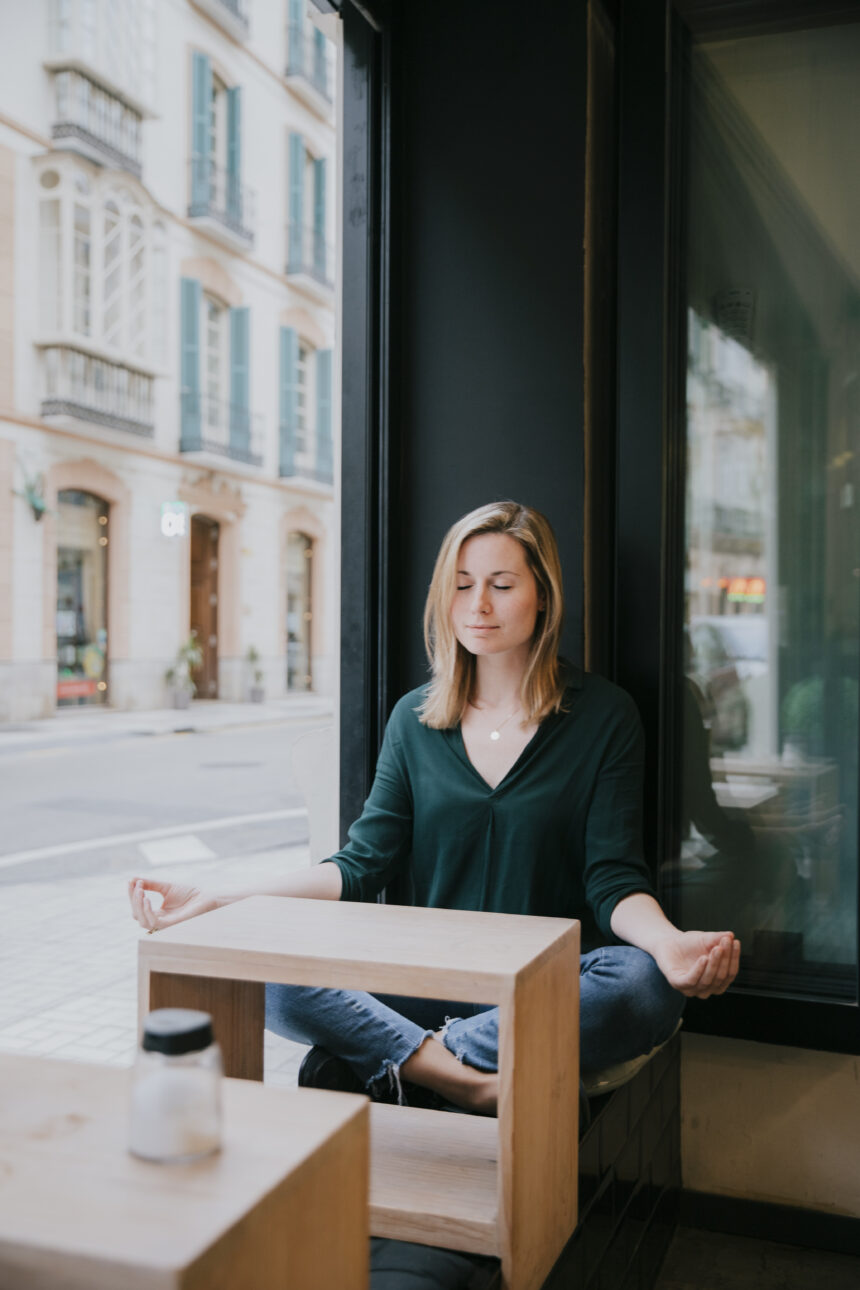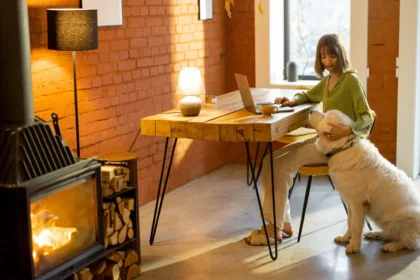In a world that won’t stop pinging you, silence now feels like status. Enter meditation cafés: calm, curated, and designed for a brain that needs a breather.
Why Silence Feels Like a Luxury Now 🕯️
Your day is a whirl of alerts, crowded commutes, and algorithmically optimized distraction. That cognitive smog is why silence reads as premium: it’s scarce, hard to protect, and often paywalled by architecture and time. Meditation cafés bottle that quiet and serve it by the minute, pairing stillness with tea rituals and gentle guidance so you can downshift quickly.
If you’re new to the space, it helps to remember that cafés borrow from a long lineage of contemplative practice. The basic tools—breath awareness, body scans, and simple attention training—fall under the broad umbrella of meditation. No incense or pretzel poses required; just a chair, a timer, and willingness to sit.
“Silence is the new black — I go to recharge between meetings.” — a TikTok user
What Is a Meditation Café (and How It Works)? ☕🧘
Think of a meditation café as part studio, part lounge, part library-with-tea. You walk in and the noise drops out. Phones get tucked away, voices slide to a whisper, and the menu looks nothing like your usual latte list.
Design That Calms: Light, Sound, and Scent
Minimalist lines, soft textures, and plant life do a lot of heavy lifting. Expect warm, indirect light, sound-dampening panels, and a subtle scent profile (think cedar, citrus, or unscented by default). The room teaches your nervous system to exhale.
The Menu: Breathing, Body Scans, and Tea Rituals
Offerings range from 10-minute breath resets to 30-minute guided sits, sometimes with sound bowls or gentle stretching. Tea flights—herbal, green, oolong—replace espresso shots, with snacks that won’t spike your sugar or your stress. You can go guided, self-directed, or simply sit and savor quiet.
“Tried one in LA; it’s like a library for your brain, but with tea.” — a Redditor
The Wellness Tailwind — Why This Trend’s Exploding 📈
Meditation cafés didn’t appear in a vacuum; they’re riding a larger wave of wellness spending and mental-health awareness. The broader travel-and-wellness economy is surging—global wellness tourism is reaching for the trillion mark—so it’s no surprise that micro-oases are popping up between Pilates and cold plunge.
And the science cooperates with the vibe. Research associated with Harvard has long connected mindfulness with lower stress and improved focus—see how mindfulness meditation reduces stress and how mindfulness may ease anxiety and mental stress. Cafés translate that evidence into an easy, urban habit loop: stop in, sit down, come out clearer.
IRL vs. URL: Cafés, VR Retreats, and Going Off-Grid 🌿🕶️
The quiet you’re chasing can be physical or digital—sometimes both.
- Brick-and-mortar cafés offer a sensory reset you can feel: the hush, the cup’s warmth, the held space.
- Digital options let you disappear anywhere. Want to experiment without leaving home? Try VR silent retreats that recreate contemplative environments in a headset.
- Or make stillness a destination. If you prefer your quiet with sea air and sunsets, digital detox cruises hard-limit your notifications while you practice presence on deck.
“Phones off, thoughts downshift — 20 minutes feels like a weekend.” — an X user
How to Use a Meditation Café Without Feeling Awkward 🙃
No one expects you to arrive enlightened. A few simple moves go a long way.
- Arrive five minutes early. The transition matters—hang your day at the door.
- Park the phone. Silent mode and out of reach. Many cafés have lockers or sleeves to help you commit.
- Pick your intention. Focus, reset, or unwind—tiny goals guide the right practice.
- Start short. Ten to fifteen minutes is plenty; depth grows with repeat visits.
- Skip the judgment. Minds wander; bring it back. That rep is the workout.
Picking a Session That Fits Your Energy
- Drained? Try a restorative sit with longer exhales.
- Scattered? Go breath-counting or a body scan to tether attention.
- Stressed? Choose guided compassion or grounding audio to soften the edges.
Do They Actually Help? What Science (and Your Nervous System) Say 🔬
A single session won’t rewrite your life—but it can flip your day. Physiologically, slow, steady breathing nudges your parasympathetic system (the “rest-and-digest” side) into the driver’s seat. Mentally, focusing on a simple anchor—breath, sound, sensation—catches rumination before it spirals.
That’s consistent with studies linking mindfulness to lower cortisol, improved attention, and better mood. For accessible summaries, revisit the research roundups that show mindfulness meditation reduces stress and mindfulness may ease anxiety and mental stress. Translation: cafés offer training wheels for a practice you can take anywhere.
The Business Story: Can Quiet Scale? 🧾
Stripped of candles and playlists, a meditation café is a unit economics puzzle. The costs are rent, buildout, instructors, and staff; the levers are memberships, day passes, class packs, and add-ons (tea, retail, workshops). The model scales when you fill the off-peak hours with short resets for office workers and anchor the evenings with longer guided sessions.
Partnerships help: corporate wellness drop-ins, pop-up classes in co-working spaces, and brand collabs on “mindful hours.” The smartest operators treat their apps like a second storefront—push reminders for micro-meditations at 11:30 and 4:00, then reward streaks with comped tea flights.
Quick Start: Build Your Own Mini Café at Home 🏠
Bring the vibe to your living room with a few intentional tweaks.
- Lighting: Warm, indirect, dimmable. A small lamp beats an overhead glare.
- Sound: Noise-cancel or add a gentle soundscape (fan, rain).
- Seat: A cushion or supportive chair. Comfort helps consistency.
- Scent: Optional—if used, keep it light (citrus, mint).
- Routine (10 minutes):
- Minute 0–2: Sit, shoulders down, exhale longer than you inhale.
- Minute 2–8: Count your breaths (1–10, repeat).
- Minute 8–10: Let the counting go; rest attention on sounds or body sensations.
Repeat three days this week. Book a café session as a treat, not a chore.
City Spotting: Where They Pop Up (and Why)
Watch for meditation cafés near high-density office clusters, universities, and commuter hubs where 10–20 minute windows exist between meetings or trains. They also thrive in neighborhoods with boutique fitness and plant stores—the Venn diagram of people who love pilates, pothos, and peace is basically a circle.
Etiquette Myths to Ignore
- “I can’t sit still, so I can’t meditate.” Plenty of sessions use movement and breath; stillness is trained, not assumed.
- “It’s religious.” Cafés generally keep it secular and skills-based.
- “I need an hour.” You need intention. Five minutes done is better than sixty minutes imagined.
Culture Check: Why This Moment
Every era invents a ritual for recovery. Ours happens to be portable, quiet, and app-friendly. Meditation cafés turn calm into a habit loop you can schedule like a coffee. They’re not replacing therapy or solving burnout alone, but they give your brain an accessible pause button—one you can actually press between the calendar pings.
FAQ
What exactly is a meditation café?
Meditation cafés are serene urban spaces offering guided or self-led quiet sessions, tea, and minimal distractions so you can reset your attention.
Why are meditation cafés gaining popularity?
They sit at the intersection of mental-health awareness and convenience. With urban stress high and meditation cafés easy to drop into, the format fits modern schedules.
Do meditation cafés serve food and beverages?
Most meditation cafés focus on tea and light, calming snacks—things that support a relaxed state instead of jolting you back into hustle mode.
How can I practice mindfulness at home?
Create a quiet corner, run a simple breath routine, and add short breaks to your day. A few café sessions make it easier to keep meditation cafés habits going at home.
Is there science behind the benefits?
Yes—research shows mindfulness practices reduce stress and anxiety. That’s part of why meditation cafés have momentum with people who want results, not just vibes.









